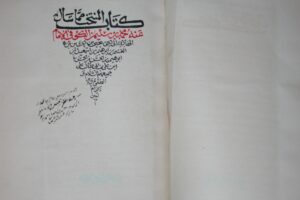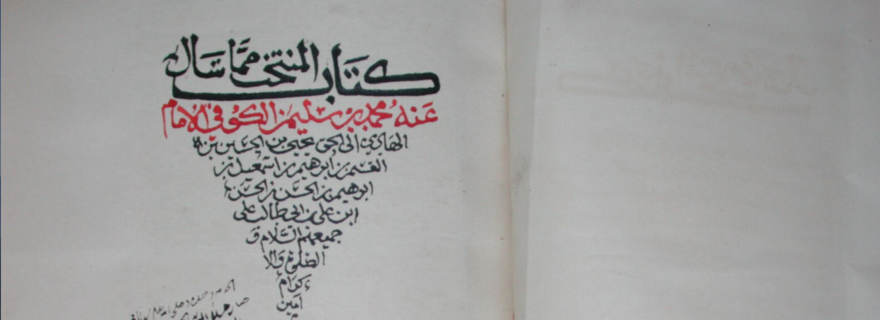On The Historical Potential of Zaydi Legal Sources
In the study of early Islamic history, few locations are as important as the southern Irāqī city of Kūfa. Originally founded as a garrison town in 17/638, the city quickly grew in population. Its role in the political turmoil of the 1st/7th century is well-known. The city’s intellectual importance is also widely acknowledged as Kūfan scholars were at the forefront of a range of disciplines from Qur’ānic studies and grammar to ḥadīth and law. In addition, as I have noted in my previous work, Kūfa was home to many different communal groups including (but not limited to) the forebears of the Zaydī and Imāmī Shī‘a as well as a distinct group of traditionists and a range of legal scholars (later associated with specific law schools). In this post, I am interested in adding another dimension of complexity to our understanding of the city’s population, particularly in relation to the Zaydī Shī‘a.
Most studies of early Zaydī Shī‘ism (though there are not very many!) note the presence of a distinct community in 2nd/8th century Kūfa. The nature of their Zaydī identity remains contested. Terms like “Batrī” and “Jārūdī” are generally used to describe differing positions pertaining to the Imāmate and some aspects of jurisprudence. Some would argue that these labels referred to specific groups within the larger Zaydī community while others (myself included) maintain that these terms represent a heresiographical attempt to explain a change or evolution within Zaydism. It is certainly important to figure out the dynamics of the early Zaydī community but the degree to which we can actually derive information is limited by the paucity of the contemporaneous source material. The sources (or lack thereof) pose a problem, but I would suggest that they also offer an opportunity. The key lies in understanding the nature of the extant sources and then devising questions appropriate to that material. Let us turn to an example.
The two earliest extant Zaydī legal works are: (1) the purported Musnad of Zayd b. ‘Alī (d. 122/740) which (according to Wilferd Madelung) likely represents a collection of Kūfan Zaydī legal currents from the 2nd/8th century and (2) the Amālī of Aḥmad b. ‘Īsā (d. 248/862) which is a collection of traditions actually compiled by Muḥammad b. Manṣūr al-Murādī (d. 290/893). These texts likely preserve echoes of early Zaydī law in Kūfa from the late 2nd/8th
to the early 3rd/9th century. Their ascriptions to earlier figures are debatable. The next important Zaydī legal text with links to Kūfa is Muḥammad b. Sulaymān al-Kūfī’s (d. early 4th/10th
century) Kitāb al-muntakhab which is organized around a series of questions and answers with the Zaydī Imām al-Hādī ilā’-l-Ḥaqq Yaḥyā b. al-Ḥusayn (d. 298/911). According to al-Kūfī, who was born and educated in Kūfa, this work contains al-Hādī’s opinions but this claim is tenuous when compared with another legal text, Abū ‘Abd Allāh Muḥammad b. ‘Alī al-‘Alawī’s (d. 445/1053) al-Jāmi‘ al-kāfī. The Jāmi‘
is a collection of legal opinions ascribed to Zaydī legal authorities with a particular interest in the Kūfān Zaydī scholars of the 2nd/8th
and 3rd/9th century.

A quick (and very preliminary) comparison of the legal opinions of the Kitāb al-muntakhab and the views preserved in the Jāmi‘ al-kāfī suggests that al-Kūfī ascribed the opinions of his teacher (al-Murādī) to al-Hādī, perhaps in order to buttress the political legitimacy of the latter. The purpose of this exercise is not to disparage the reliability of any of these texts but rather to point out their interconnectedness. These four sources provide considerable insight into the diversity of Zaydī law in Kūfa in the 2nd/8th and 3rd/9th centuries. We now have the ability to excavate an ever more detailed social geography of the city of Kūfa. It is known that Zaydīs were prevalent in the city at this time but they were further divided into legal circles. These legal circles, centered on figures like Muḥammād b. Manṣūr al-Murādī, become apparent when the early Zaydī legal texts are read in conversation with each other.


